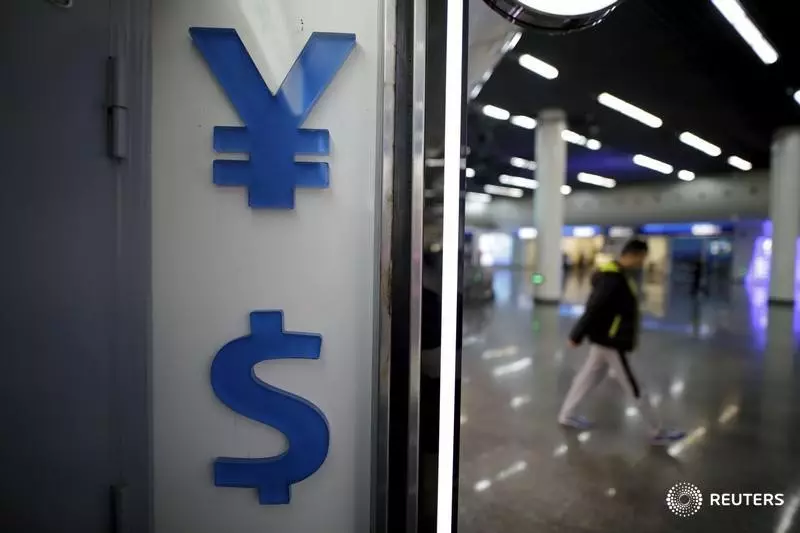In a notable shift within the Asian currency market, many currencies steadied themselves following a period of significant gains. This stabilization comes on the heels of the Federal Reserve’s decision to lower interest rates, a move that was largely anticipated by market participants. As the economic landscape evolves, the reactions of regional currencies highlight the intricacies and interdependencies that characterize today’s financial systems. The U.S. dollar, which had previously surged to a four-month high, found itself undergoing a small retreat, prompting traders to secure their recent profits.
On Friday, market participants observed the dollar index and its futures stabilize after experiencing a considerable decline the previous day. The Fed’s decision to reduce the interest rates by 25 basis points, setting them between 4.50% and 4.75%, precipitated these fluctuations. This marked a significant moment as traders reflected on the potential long-term implications of political developments, particularly the presidential victory of Donald Trump in the 2024 elections. His administration’s proposed policies are seen as potentially leading to sustained inflationary pressures.
The interplay between political events and economic policy became a focal point of attention. Fed Chair Jerome Powell asserted that the recent changes in U.S. leadership would unlikely sway the monetary policy in the short term. This announcement was crucial, offering reassurance to investors and economic analysts who were monitoring the effects of Trump’s administration on economic stability. Despite political upheaval, the Fed’s indication that it would likely continue to ease policies in the months ahead establishes a sense of continuity in monetary governance, which could foster greater confidence in market behaviors.
With traders estimating a 76.5% probability of another rate cut by December, the anticipation surrounding future Fed decisions remains high. This expectation may play a significant role in prompting traders to adopt strategies that reflect a volatile yet promising market environment. Overall, the Fed’s recent actions signal a willingness to adapt monetary policy in tune with unfolding economic data, allowing for a dynamic response to market conditions.
Another narrative threading through the market movements is the deliberation of fiscal stimulus by the Chinese government, tied closely to the concluding discussions of the National People’s Congress (NPC). As the meeting progressed towards its final day, market participants awaited further details regarding potential stimulus measures. Analysts projected a minimum of 10 trillion yuan (approximately $1.6 trillion) in fresh government spending, which could serve as a pragmatic response to ongoing economic challenges.
The absence of specific timelines or detailed action points following previous announcements raised questions regarding the effectiveness of these measures. The Chinese yuan, in particular, faced pressures highlighted by a modest decline on Friday despite recovering from prior losses. As the USDCNY pair showed some signs of increase, many investors remained cautious, ensuring they stayed attuned to the outcomes emerging from the NPC discussions.
Regional Currency Characteristics
The broader landscape of Asian currencies offered a mix of trends, reflecting varied responses to the dollar’s fluctuations and the Fed’s monetary policy decisions. The Japanese yen, for instance, exhibited resilience with a noticeable drop against the dollar, as government officials reiterated their commitment to intervene in the currency market if volatility escalated. Meanwhile, the Australian dollar appeared robust, gearing up for nearly a two percent increase over the week despite a small drop on Friday.
The South Korean won exhibited a slight increase against the dollar, while the Singapore dollar remained relatively stable, highlighting diverse responses among regional currencies. However, the Indian rupee struggled significantly this week, reaching unprecedented lows above 84.4 to the dollar. This weakness, indicative of broader underlying pressures, underscores the challenges facing emerging market currencies amid shifting global dynamics.
The recent actions taken by the Federal Reserve, coupled with the evolving responses from Asian currencies, underscore a period of heightened market sensitivity and potential volatility. The intricate relationship between monetary policy, political developments, and regional economic strategies will remain at the forefront as traders adjust to the new normal. Moving forward, stakeholders will need to navigate these complexities with vigilance, aiming to capitalize on opportunities while managing inherent risks in a rapidly shifting landscape.


Leave a Reply